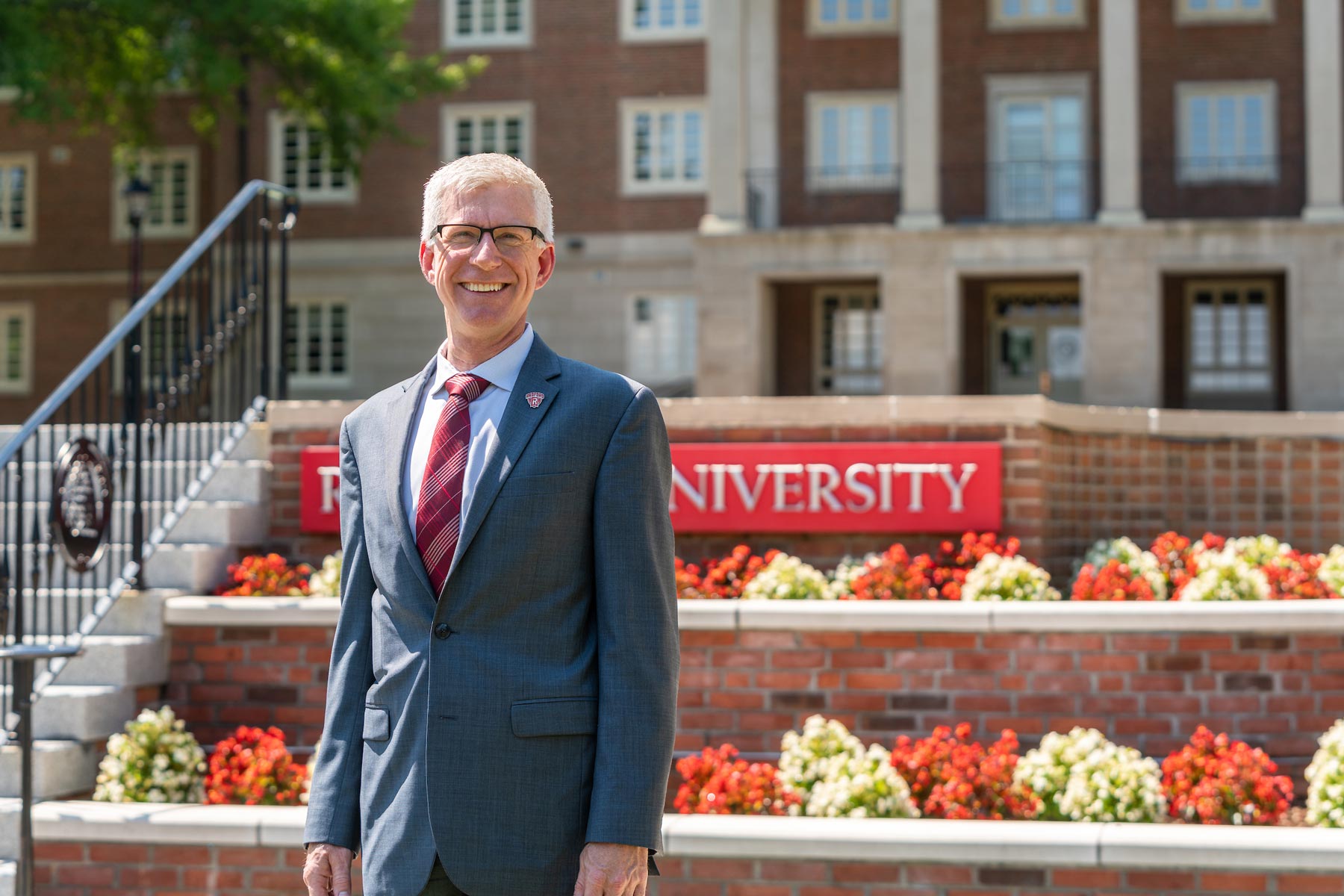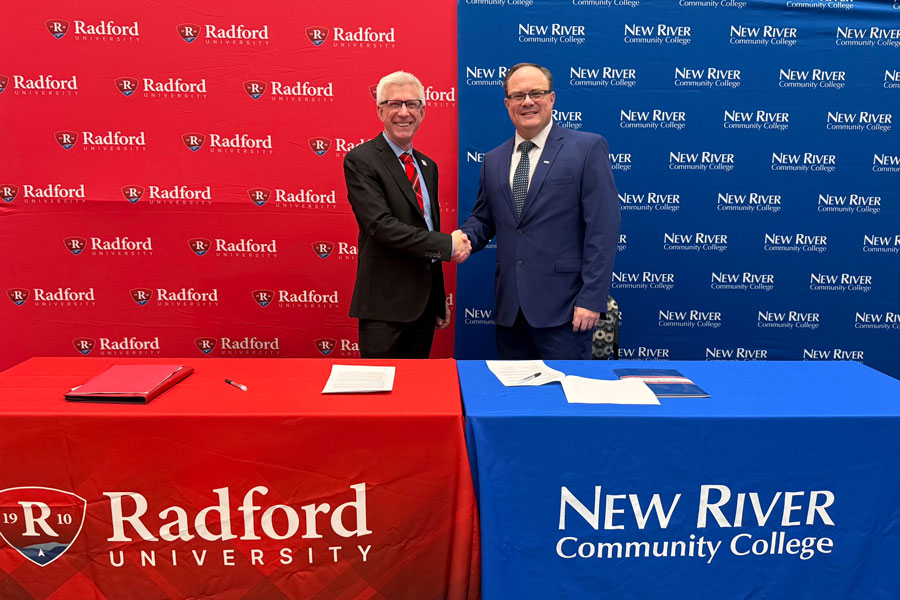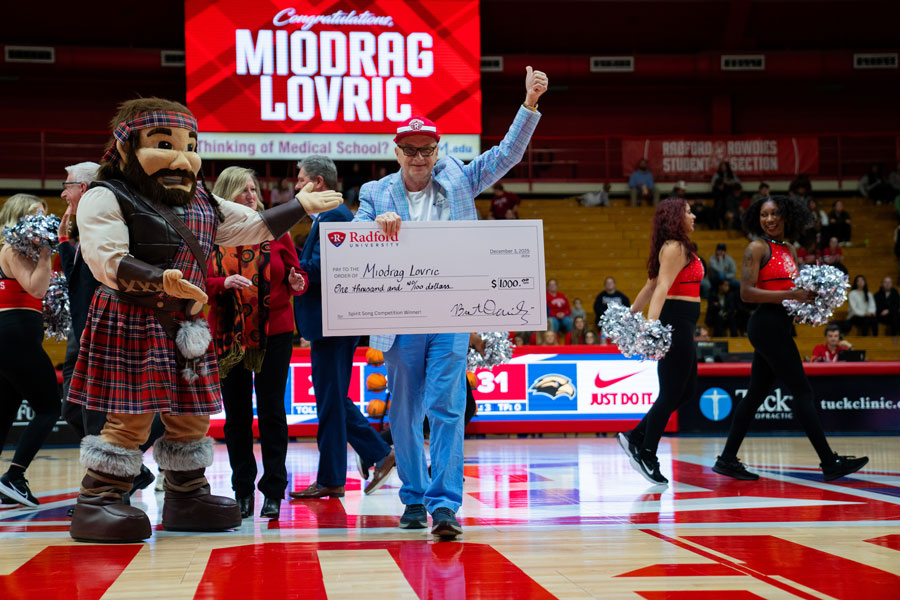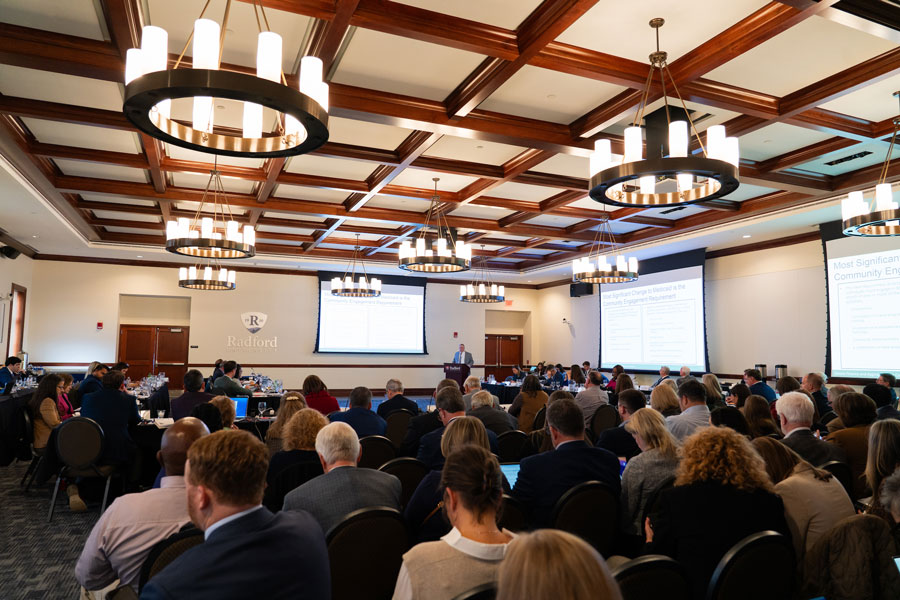Radford University
Office of the President
A Welcome Message from Bret Danilowicz, Ph.D.
President of Radford University
Thank you for your interest in Radford University!

With more than 7,800 students, 1,500 employees and 80,000-plus alumni, our living and learning community extends across seven colleges, a growing Honors college, and over 100 degree programs at the bachelor’s, master’s and doctoral levels.
Radford University is accessible to students at all stages of their lives and careers. Our degree offerings are available at our beautiful main campus in Radford, Radford University Carilion in Roanoke, the Southwest Virginia Higher Education Center in Abingdon, and across 30 fully online degree options. Working professionals can take their careers to the next level at Radford University with affordable and flexible certificates in a variety of programs, including Cybersecurity and Educational Leadership.
No matter the location, we take pride in strong faculty-student bonds formed within an environment where ideas, individuality and spirit are welcomed. From undergraduate research to abundant internship opportunities, to unique hands-on learning possibilities, Highlanders can begin their path to a rewarding career or advanced degrees from day one.
I encourage you to explore our enhanced website and learn about everything Radford University has to offer. On our Points of Pride page, you’ll see the university’s enrollment progress, national rankings and unique distinctions. The University Impact page chronicles community service, economic development initiatives, local government partnerships, and healthcare programs that connect Radford University to the communities we serve, and the entire Commonwealth of Virginia.
What makes Radford University especially unique is our connection to Southwest Virginia’s natural resources. Our main campus borders one of the world’s oldest rivers, the New River, and both our Radford and Roanoke locations offer easy access to incredible outdoor activities. The possibilities are so abundant, that we were voted as the Blue Ridge Outdoors magazine Top Adventure College!
On behalf of our students, faculty and staff, we invite you to visit Radford University and Find Your Place. Here.
Tartan Proud,
Bret Danilowicz, Ph.D.
President
Office of the President News
-
Radford University, NRCC announce shared student advisor position to improve transfer student success through Tartan Transfer
December 18, 2025
New River Community College (NRCC) and Radford University have announced a new collaboration: a shared student advisor position designed to strengthen transfer pathways and improve student success.

-
Board of Visitors approves six-year strategic plan, ‘empowering brighter futures and building stronger communities’
December 12, 2025
The strategic plan will guide Radford University for the next six years.

-
Math professor pens Radford University’s new spirit song
December 8, 2025
On Wednesday night inside the Dedmon Center, the halftime music at the Radford men’s basketball game sounded a little different.

-
Virginia Senate committee brings two-day budget summit, statewide spotlight to Radford University
December 4, 2025
Radford University became the temporary center of Virginia’s budget conversation Nov. 20-21 as the Virginia Senate Finance and Appropriations Committee held its annual retreat in Kyle Hall on the main campus.
